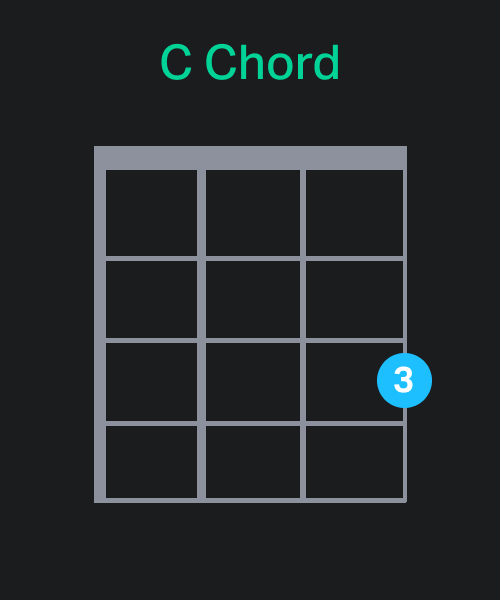Article
The ukulele is becoming more and more popular. Countless new players have started learning how to play ukulele. Whether you’re looking to impress your friends, play just for fun, or become a world-class ukulele player, you have to start with the basics. Luckily for you, we can help you get started on your ukulele playing journey. Think of this as your very first ukulele lesson!
Here are 8 steps for learning how to play ukulele. Follow the links in the text if you want to learn more about playing the ukulele.
Table of contents
1. Choose the right ukulele for you
There is no one-size-fits-all solution for learning how to play ukulele. That’s why it’s important to choose the right ukulele for you and your needs. There are a few things to consider when learning to play: the ukulele size, price of the instrument, and the type of ukulele you want to play.
Make sure to check out our ukulele buying guide for some good recommendations and things to look for when buying a ukulele.
Ukulele sizes
Although the ukulele is a beginner-friendly instrument, there’s one thing that can cause some confusion for many beginners: choosing the correct ukulele size. There are five main sizes of the ukulele. These are from smallest to largest:
- Soprano ukulele
- Concert ukulele
- Tenor ukulele
- Baritone ukulele
- Bass ukulele

In addition to the size of these ukuleles, they can have slightly different tunings as well. That is why beginners should start learning with a ukulele size that uses the standard ukulele tuning. A soprano ukulele is a good option for smaller beginners and people with small hands. However, a soprano ukulele can be too small for others. Depending on your size, go for either a concert or tenor ukulele. Visit your local instrument store and test which feels better and more suitable for your hands.
If you want to learn more, go check out our detailed guide to different ukulele sizes.
Price
What makes the ukulele an accessible and beginner-friendly instrument is also its price: Ukuleles tend to be very affordable, unless you go for a higher-end model. Usually, the smaller a ukulele is, the less it’s going to cost. However, no matter what size you choose, don’t save money in the wrong places.
There are many ukuleles out there that have been manufactured using cheap materials, such as plastic. By paying more, you can get a ukulele that is made from durable wood or some other sturdy material. In case you’ve decided to learn how to play ukulele, you might as well begin by purchasing a quality instrument that’s going to last for a while. You can get a good beginner ukulele for around $100. Pay much less, and you’ll have to make some compromises when it comes to playability and the instrument’s quality. Cheaper ukuleles also tend to go out of tune very quickly.
Acoustic or electric ukulele
Most players are going to go for an acoustic ukulele, but it’s good to know that (just like electric guitars) there are electric ukuleles as well. If you get an electric ukulele, you can plug it into an amplifier.
2. Get familiar with the parts of a ukulele
If you have played the guitar or bass, you’re already familiar with the different parts of a ukulele. Some of the most important ukulele parts to know include:
- body
- neck
- fretboard
- frets
- nut
- strings
- headstock
- tuning pegs
- bridge

Being familiar with these parts and what they’re used for allows you to speak the same language as other ukulele players and music teachers. Following an online ukulele lesson or watching a tutorial is also much easier when you know what the different parts of the instrument are called.
3. Learn how to hold a ukulele
Before you strum a single chord, make sure you’re holding the ukulele correctly. Some ukulele players prefer to play using a strap that hangs around their neck. For those playing without a ukulele strap, use your fretting hand (the left hand) to hold the neck of the ukulele. Use the thumb of your left hand to support the back of the ukulele’s neck. This leaves the other four fingers free to play the strings.
Keep the back of the ukulele pressed close to your chest. This leaves your strumming hand (in this case the right hand) free for strumming the strings. When you look down from this position, the string closest to your face is the G string.

Left-handed players can choose to hold the ukulele just like right-handed ukulele players. However, lefties can also choose to flip the instrument so that the right hand is used for holding the instrument’s neck and the left hand is used for strumming.
4. Learn how to tune a ukulele
As with any stringed instrument, knowing how to tune it correctly is an essential part of playing. The ukulele is not an exception to this. First, let’s look at the strings of a ukulele. From lowest to highest, the ukulele strings are G, C, E, and A. Unlike a guitar, for instance, the ukulele uses a so-called reentrant tuning where the strings are not tuned in a linear descending order. The most common ukulele sizes use the standard G-C-E-A tuning, but instruments like the baritone and bass ukulele are tuned to some other alternate tuning.

There are a few different ways to tune your ukulele. More advanced ukulele players can tune the instrument by ear without any additional help. You can tune a ukulele by using some other instrument such as a piano as a reference point as well. However, the easiest way is to use a ukulele tuner or a tuner app on your phone. Ukulele tuner devices can be handy, but they are usually expensive. A free tuner app such as GuitarTuna allows you to tune your ukulele wherever you are.
Check out our video lesson on how to tune a ukulele with a tuner app.
5. Play your first ukulele chords
Your instrument is now in tune, so it’s time to start learning your first ukulele chords. Just like on a guitar, ukulele chords can be read using chord diagrams or chord charts.
Reading chord diagrams
A tool that will come in handy when reading chords is the chord diagram. Reading a chord diagram is simple:
- The top of the chord diagram shows the name of the chord.
- Each vertical line stands for a string of the ukulele. From left to right: G, C, E, and A.
- The horizontal lines represent frets. The topmost horizontal line stands for the nut (unless stated otherwise).
- A circle above the horizontal line means that the string is played open. An “X” means that the string is not played or it’s muted.
- The numbered circles show the positions where each string is fingered. The numbers stand for each of the four fingers: 1 is the index finger, 2 is the middle finger, 3 is the ring finger, and 4 is the pinky finger.
- A numbered horizontal line across the fret represents a barre chord.
Don’t be intimidated by chords or think they’re too complex. A single finger is enough to create the correct shape for some ukulele chords. One of these is the C chord, so let’s start with your very first chord on the ukulele.
Major C chord
The major C chord (or simply the C chord) is a great ukulele chord to learn as a beginner. All you need to do on the fretboard is use your ring finger to press the third fret of the highest A string. All other strings are player open. Now just strum all four strings starting from the lowest G string. For now, you can use your thumb to play the strings with your strumming hand. Congratulations! You’ve just played your first ukulele chord, the major C chord.

Minor A chord
Now let’s take a look at a simple minor chord. As opposed to major chords that have a bright and happy sound to them, minor chords sound sadder. The name of a minor chord is followed by the lower-case letter “m.” In this case, the minor A chord is written as “Am.” To play the Am chord, press the second fret of the G string with your middle finger. Play the other strings open.

Major F chord
You can now play ukulele chords using one of your fingers. How about two fingers of your fretting hand? Just like the minor A chord, the F chord requires you to press the second fret of the G string with your middle finger. To create the shape for an F chord, also press the first fret of the E string with your index finger. Now strum all four strings and you have the F chord. Just make sure that your hand and the sides of your fingers don’t block the other strings from ringing.

Learn more basic chords
Some simple songs on the ukulele may require only two or three chords to play. Practice mastering the C, Am, and F ukulele chords and start to expand the number of chords you know. You can read more about ukulele chords and chord diagrams in our guide to basic ukulele chords.
6. Practice strumming the ukulele
How you strum the strings of a ukulele has an effect on the sound. For example, if you strum down using your thumb, the sound will be smooth and mellow. However, if you strum back up using the nail of your thumb, the sound will be sharper and brighter. It also matters how many fingers you’re using for strumming. Strumming with more than a single finger makes it sound like there are more people playing at once.
In addition to just strumming the strings down, a simple strumming pattern to practice is first strumming down and then back up while you hold the same chord. Instead of using just your fingers, you can choose to use a ukulele pick for strumming and picking the strings as well.

You can watch our video lesson where our ukulele experts share their tips on how to strum the ukulele.
7. Find songs to play on the ukulele
As a beginner learning to play songs on the ukulele, try choosing songs that don’t use too many different chords. It’s best if you’re already familiar with all the chords used in the song. Remember that even if your favorite song is not written for the ukulele, chances are good that someone has created chords or ukulele tabs for the song. The internet has plenty of ukulele chords and tabs available for free.
You can also use Yousician’s song library to search for more great ukulele songs to play and practice. Don’t forget to check out our article where we list 16 easy ukulele songs that are perfect for beginners. Some great ukulele songs for beginners include “Riptide” by Vance Joy and “I’m Yours” by Jason Mraz.
8. Practice playing ukulele and have fun
One possible mistake to make as a beginner is to bite too much at once. Take things slow and make sure to learn the foundations before moving on to more complicated chords, songs, and advanced playing techniques. Most importantly, have fun!
In addition to ukulele lessons in person, beginner ukulele players can learn with Yousician. Our interactive online ukulele lessons help you on your ukulele journey as you get familiar with the ukulele and expand your musical knowledge. Learn to play ukulele chords, strumming patterns, playing melodies with tablature, and much more. Learn the ukulele and other instruments playing your favorite songs, try your hand at weekly challenges, and learn at your own pace, wherever and whenever you want. Try Yousician for free today!